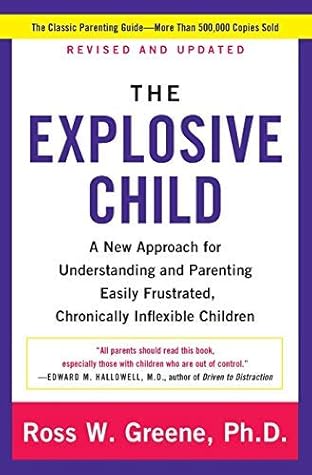More on this book
Community
Kindle Notes & Highlights
Read between
March 23, 2022 - February 10, 2024
Anyone can become angry, that is easy . . . but to be angry with the right person, to the right degree, at the right time, for the right purpose, and in the right way . . . this is not easy. —ARISTOTLE
Collaborative & Proactive Solutions.
CPS model
what those behaviors are telling us is the most important part.
your child is having difficulty meeting certain expectations
While it’s tempting to focus on your child’s behaviors, in this book we’ll be focusing instead on the expectations they are having difficulty meeting that are causing those behaviors.
oppositional-defiant disorder, bipolar disorder, intermittent explosive disorder, and disruptive mood dysregulation disorder.
as long as the children’s caregivers are willing to take a close look at their beliefs about the factors contributing to concerning behaviors and then apply strategies that are a far cry from discipline-as-usual.
dealing more effectively with these kids requires, first and foremost, an understanding of why they’re responding so poorly to problems and frustrations.
manipulative, attention-seeking, unmotivated, stubborn, willful, intransigent, bratty, spoiled, controlling, resistant, out of control, and defiant. There’s more: they are skilled at testing limits, pushing buttons, coercing adults into giving in, and getting their way.
kids who exhibit concerning behaviors don’t exhibit those behaviors all the time, just sometimes
permits us to take a closer look at the specific conditions in which they’re exhibiting concerning behaviors.
when there are expectations they’re having dif...
This highlight has been truncated due to consecutive passage length restrictions.
If he’s having no difficulty meeting that expectation, it won’t cause concerning behaviors.
Why does your child exhibit concerning behaviors more often and, perhaps, in ways that are more extreme than many other kids?
he’s lacking crucial skills.
flexibility, adaptability, frustration tolerance, emotion regulation, and problem solving
not lacking motivation?
If your kid could respond to problems and frustrations adaptively, he would.
kids do well if they can.
do not choose to exhibit concerning behaviors any more than a child would choose to have a reading disability.
focusing instead on the expectations your child is having difficulty meeting.
unsolved problems
both nature and nurture are always implicated when it comes to a child’s development.
diagnoses—such
can be helpful
they don’t provide you with information about your child’s specific lagging skills and unsolved problems.
we adults tend to respond to them in ways that are far less empathic and far harsher and more punitive.
it’s communicating the exact same thing: I’m stuck . . . there’s an expectation I’m having difficulty meeting.
it’s going to stay harder if you’re still thinking that your child’s behavior is manipulative, attention-seeking, unmotivated, stubborn, willful, intransigent, bratty, spoiled, controlling, resistant, out of control, and defiant.
What skills is he lacking?
What expectations is he having difficulty meeting?
If you identify those unsolved problems proactively, they become highly predictable. And if they’re highly predictable, they can be solved proactively rather than in the heat of the moment.
Your child’s concerning behaviors—whether lucky or unlucky—are communicating that he is having difficulty meeting certain expectations.
Those expectations—called unsolved problems—are predictable and can be identified and solved proactively.
Partners, not enemies.
changing lenses and practices can take some doing.
know what concerning behaviors
know what diagnoses
meaningful time contemplating (and maybe even agonizing over) the potential factors th...
This highlight has been truncated due to consecutive passage length restrictions.
not going to be talking about any of those things for the rem...
This highlight has been truncated due to consecutive passage length restrictions.
lagging skills and unsolved problems.
take your child’s concerning behaviors less personally, respond to your child with greater compassion, and better anticipate situations in which she is likely to run into difficulty.
(www.livesinthebalance.org).
consider the range of responses or solutions that would help you solve the problem (those solutions are almost always drawn from past experiences).
likely outcomes of each potential solution
language is the primary way in which we solve problems.
basic vocabulary for letting people know


